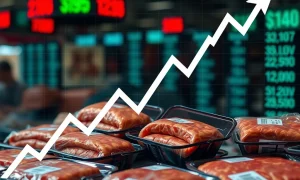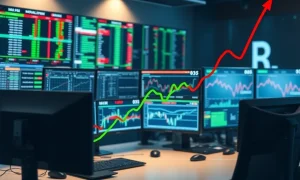While investors nervously watch margin debt hit unprecedented levels, one seasoned fund manager reveals this metric alone doesn’t signal imminent danger. Surprisingly, other hidden factors pose greater threats to market stability right now.
Understanding Margin Debt in Current Markets
Margin debt currently reaches record highs across major exchanges. However, experienced analysts note this situation differs significantly from previous cycles. Consequently, investors should consider multiple perspectives before making decisions.
Three Real Red Flags Beyond Margin Levels
The fund manager identifies several critical indicators that deserve more attention than margin debt alone:
- Leverage concentration among institutional investors
- Derivative exposure in corporate balance sheets
- Market liquidity during stress periods
Historical Context of Margin Debt Cycles
Previous market cycles show margin debt peaks don’t always precede crashes. Actually, sustained high levels sometimes coincide with extended bull markets. Therefore, context remains crucial for proper interpretation.
Risk Management Strategies Today
Professional investors currently employ sophisticated hedging techniques. These methods help mitigate potential margin-related risks effectively. Meanwhile, retail investors should focus on diversification and position sizing.
Regulatory Landscape and Margin Requirements
Regulators recently implemented stricter margin requirements for certain instruments. These changes significantly reduce systemic risk compared to previous eras. Thus, current margin debt levels carry different implications.
FAQs
What exactly is margin debt?
Margin debt represents borrowed funds investors use to purchase securities. This leverage amplifies both gains and losses in investment portfolios.
Why are experts not worried about current margin levels?
Experts note better risk management systems and regulatory oversight exist today. Additionally, debt distribution appears more balanced across investor types.
What indicators should investors monitor instead?
Investors should watch credit spreads, market breadth, and volatility patterns. These often provide earlier warning signals than margin debt levels alone.
How can retail investors protect themselves?
Retail investors should maintain appropriate cash reserves and avoid excessive leverage. Diversification across asset classes remains crucial for risk management.
Are there any sectors particularly vulnerable?
High-valuation growth stocks and leveraged sectors show higher sensitivity to margin changes. However, overall market conditions remain relatively stable currently.
What historical precedents exist for current conditions?
Similar margin debt levels occurred during mid-1990s expansion without immediate negative consequences. Context and supporting factors determine eventual outcomes.








